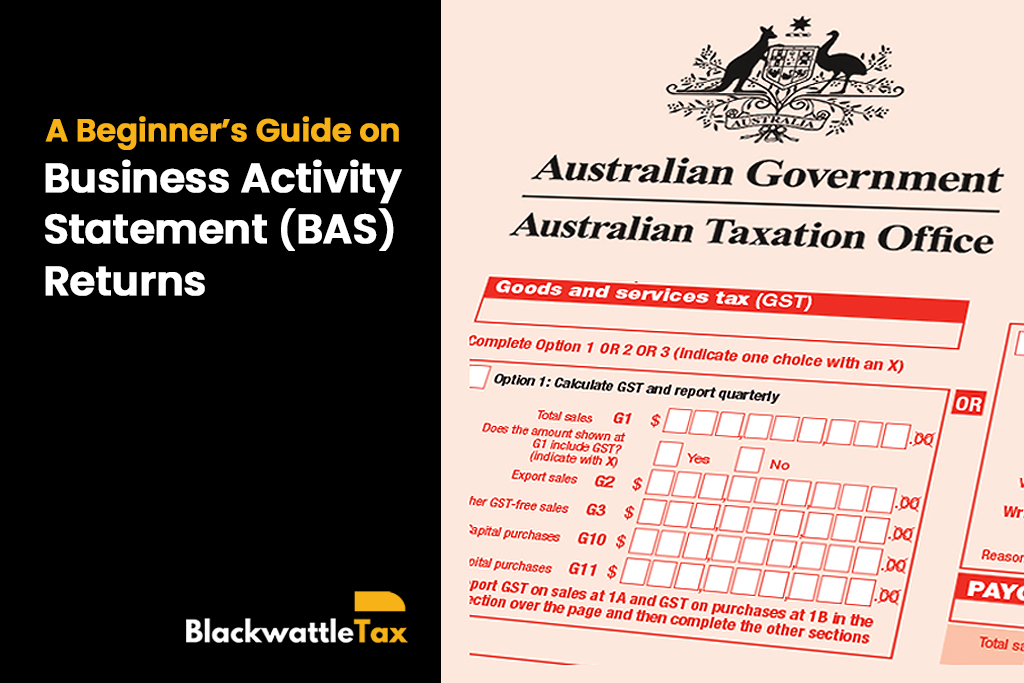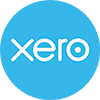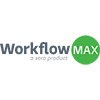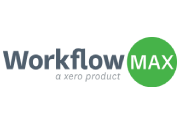If you’re operating a small business, you will likely be required to submit a Business Activity Statement (BAS) return to report your Good and Services Tax (GST) obligations to the Australian Tax Office (ATO). Generally, business tax turnover more than $75,000 per annum must be registered for GST.
It can be overwhelming for small business owners to run their business and then worry about lodging BAS by the due dates with the ATO.
To help, we’ve put together this comprehensive guide to walk you step by step through the process and ensure that you can stay on top of your tax affairs by lodging correctly and on time.
How do I know if I need to register for Goods and Services Tax (GST)?
Small business owners must register for GST if the business reaches the turnover thresholds outlined by the ATO. Generally, small businesses that turn over more than $75,000 per annum will need to be registered for GST.
Most of the income a small business pays and receives is subject to the 10% Goods and Services Tax.
However, there are a few common exceptions:
- Basic foods, education courses and medical, health and care products and services are often GST-free (or exempt from GST). You should speak with a small business accountant to ensure you have the right treatment for GST for your goods and services.
- A small business providing taxi and rideshare services, including driving for Uber, will need to be registered for GST regardless of its turnover.
- If you operate a non-profit organisation, the turnover threshold is increased to $150,000 before you are legally mandated to register.
Only after you have been registered for GST should you begin charging it for your goods and services.
What are Business Activity Statement (BAS) lodgements?
Once you have registered for GST under your ABN (Australian Business Number), you will need to record GST for all goods and services you sell (unless it is a tax-free item as referred to above).
As a small business owner, it’s best to use current accounting software to record and track these transactions. This will make it easier to prepare a draft GST report at the end of each BAS period. The ATO requires that businesses prepare a Business Activity Statement (BAS), to report the total GST amounts paid and received.
These can be monthly returns or quarterly returns, but so long as you turn over less than $20 million a year, you can choose either frequency to suit your goals and processes.
Depending on if you paid or received more GST in running your business, you can then pay or be refunded the difference from the ATO.
It is important to note that BAS may also be used to report the following common taxes to the ATO that aren’t GST:
- PAYG Withholding if you pay wages to any employees.
- PAYG Instalments if you are enrolled in the system for Income Tax.
If you are in doubt about these taxes, speak with your small business accountant to make sure you are identifying and reporting the correct taxes to the ATO.
When are BAS due dates?
Small business owners must be aware of the due dates for all tax lodgements including BAS. Even if you engage an external accountant, the responsibility to make sure lodgements are completed on time, is the business as the taxpayer (not the accountant).
A tip for business owners is to prepare your accounts ahead of the due dates to give you (or your small business accountant) sufficient time to meet the deadlines. This will ensure that you stay up-to-date with your tax lodgements and liabilities. It will also mean you have timely access to up-to-date accounts to make critical business decisions.
Depending on how often you need to lodge returns, they will need to be lodged according to the following schedule. Please note that Registered Tax Agents may have extended due dates that can help clients meet these deadlines:
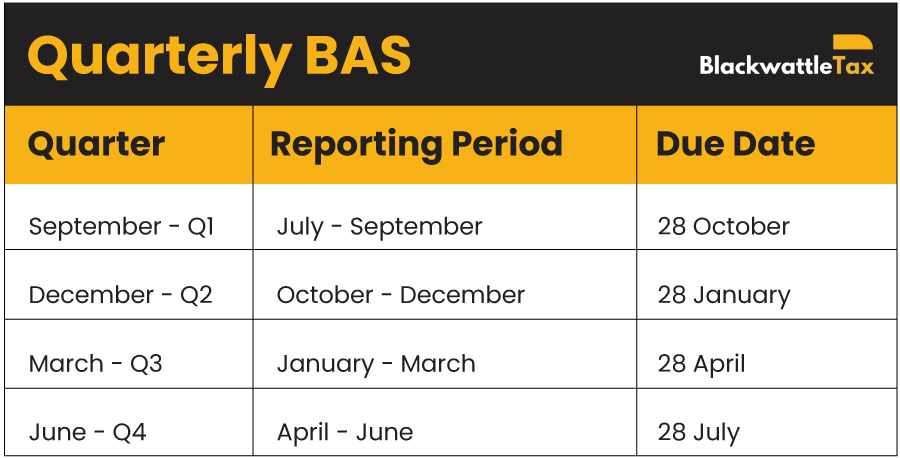
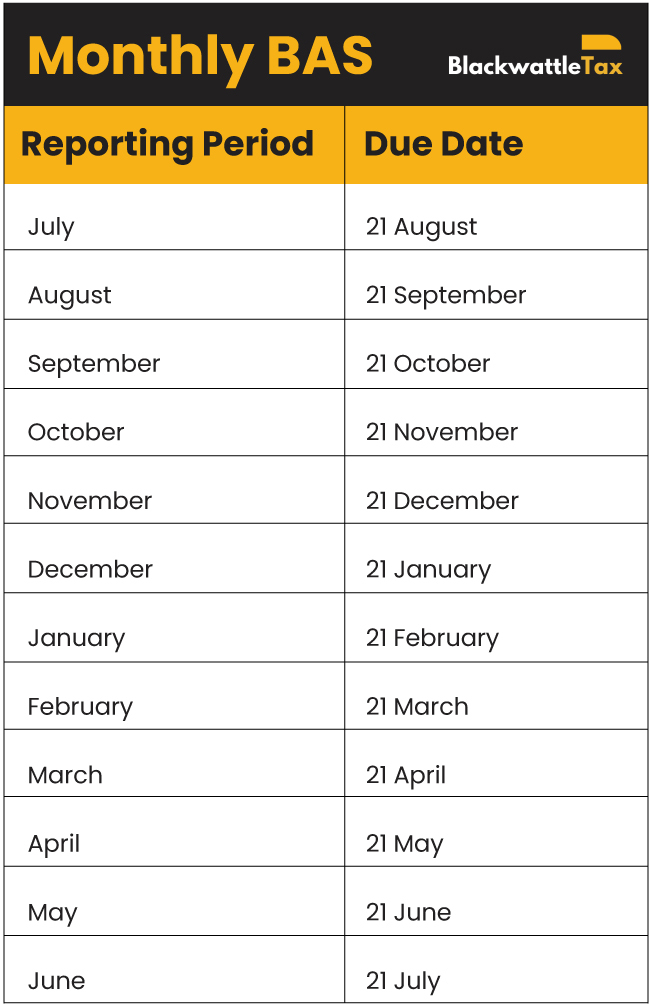
How do you complete a BAS statement?
So, you’ve registered for GST, you know what a BAS Return is and when it’s due. Your next question must be, “How do I complete my BAS Return?”
We’ve prepared a step-by-step guide for you to follow.
Step 1 – Collate and Organise your Business Activity Statement (BAS) Information
As you have probably picked up on, you need a few key pieces of information in completing your return, mainly surrounding GST.
Starting from there, you will need to find out how much GST you have charged as part of your revenue, and how much GST you have paid as part of your expenditure.
While you won’t need to send any supporting documents to the ATO, it’s important that you keep these documents on hand for the purpose of preparing your BAS Returns and Tax Returns.
The ATO stipulates that you will need to maintain a record of all your business’ tax records for the prior seven (7) years. So don’t throw away those receipts.
We recommend you use a current accounting software that has the functionality to save transaction documents with the bank records. This makes it easy to prepare, lodged, and review BAS at any time (in the case of an ATO review or audit).
Documented records should include receipts, invoices, contracts, and other relevant documents for expenses you’ve paid, records for all the sales you’ve made, and any calculation or working papers you will have drafted in preparation.
It’s important to remember that only your business-related items should be included in returns submitted to the ATO; Paying for your mortgage or grabbing lunch on business money may sound like a little thing that shouldn’t matter, but can lead to headaches down the road when you need to untangle your business and personal affairs. Keep your personal finances and business finances separate.
It would also free up a lot of your time come due date if you maintained an ongoing record of the cashflows throughout the assessed period.
Accounting software like Xero, MYOB or Quickbooks make BAS Returns a breeze, by tracking Income, Expenses, and GST. However, a simple Excel file is a handy alternative if your business is just starting up and you’re not ready to spend on a software subscription just yet.
Step 2 – Prepare your BAS Return
Now that you have all of your business documents for a period, you need to calculate a few key pieces of information to fill in your form.
Most small businesses will only need to fill in three (3) to five (5) fields. We suggest you keep reports and working papers on how you calculate these numbers and save them in an organised folder. It will save you time if you have to go back to them a year later and need to make sense of how you calculate something:
BAS G1 – Total Sales
BAS figure G1, you will be asked to report your total sales. This includes your business revenue, as well as other ancillary income you may have received over a period of trading, including:
- gross fees for services
- gross sales
- trade-ins and barter transactions
- the sale, lease or rental of land and buildings
- interest earned
- rental income
- foreign income
- commissions
- membership fees and subscriptions
- government grants and certain private sector grants
- the sale of business assets such as office equipment
Even if some of the items here do not carry GST, it’s important that you include them in your G1 figure in order to properly complete your BAS Return.
Conversely, some items excluded from BAS Returns are:
- dividends
- private sales not related to your business
- salary and wages you receive
- hobby activities
- gifts and donations
- trust and partnership distributions you receive
- tax refunds
- government pensions, allowances and payments
- transfers between banks
- loans received; This includes loans from institutions such as a bank, and private loans from your related parties
BAS 1A – GST on Sales
This item sounds fairly straightforward, but it’s important that you calculate and report it correctly. BAS figure 1A captures all the GST your business has collected as part of its revenue.
Depending on the nature of your business, you could have GST on Sales for all of your revenue, or none, so it is important that you find the correct GST treatment for your business and goods.
As mentioned earlier, most goods and services include GST, but there are a few exceptions:
- Most basic food items; You can find a handy ATO lookup tool to check if GST applies to your sale of food.
- Some educational courses, materials, and related excursions
- Some medical and health services, aids, and appliances
- Some medications
- Some religious and charitable services
This list isn’t exhaustive, so be sure to check in with your accountant or review the ATO website for a complete list.
Once you know how much of your revenue carried GST, it’s just a simple trick of dividing the amount by eleven (11) to come to your total GST amount. If math isn’t your favourite school subject, we suggest using the ATO calculator to help calculate the correct GST.
It’s important to remember that GST is a 10% tax based on your original fee, i.e. if you were charging $100 for a service pre-GST registration, your updated fee including GST comes to $110.
You can always assess your pricing as part of your greater business goals, but this ratio of income and GST is fixed.
Depending on your bookkeeping set up, you can also just go transaction by transaction, calculating the GST you’ve charged and adding it all up, but this can be time consuming and mundane.
Further, once you are registered for GST, you will need to begin issuing tax invoices outlining how much GST was involved in a sales transaction, so it would be prudent to establish a system which catalogues the GST treatment for the goods and services you provide.
That’s why it is important to set your business up for success by streamlining your internal processes or engaging with an accountant to discuss and evaluate what is best suited for you.
BAS 1B – GST on Expenses
Now you will need to apply a similar principle to your expenses. As mentioned earlier, most of the businesses you interact with on a daily basis will operate on a GST registration and thus should be issuing tax invoices for your purchases. However, it is always important that you check if a business is registered for GST. This means they must have an active ABN (Australian Business Number). Their ABN should be clearly identified on their tax invoice they issue you. You can then search the ABN or business name using ABN Lookup which is a government register of all registered ABNs in Australia. The registration will also confirm if they are registered for GST. If you can’t find their ABN or business on the ABN register or they are marked as not being registered for GST, you should not claim GST on the expense.
This makes it helpful in calculating the GST you have paid, but you can also apply the divide by eleven trick on your gross expenditure.

Similar rules apply in that the aforementioned excluded goods and services to not carry a GST amount and should be excluded from your 1B calculation.
Further, it is important that you remember to not claim the GST credits on any personal expenses, as this can lead to inaccurate reporting and land you in trouble with the ATO.
As with your 1A calculation, simply total all the GST you have paid for a period and enter the total at 1B.
BAS W1 and W2 – PAYG Withholding on Salary and Wages
These labels will only apply if your business has hired employees and other contractors. When you hire an employee, you will come to a contractually agreed upon salary to pay them over the course of a year.
To help alleviate your employees’ annual tax bill when they go to lodge their Tax Returns, a portion of the gross wages are withheld to be paid to the ATO instead of your employees.
We have prepared the basic illustrative table below to outline how the PAYW System helps your employees avoid a large hit of tax come year end:
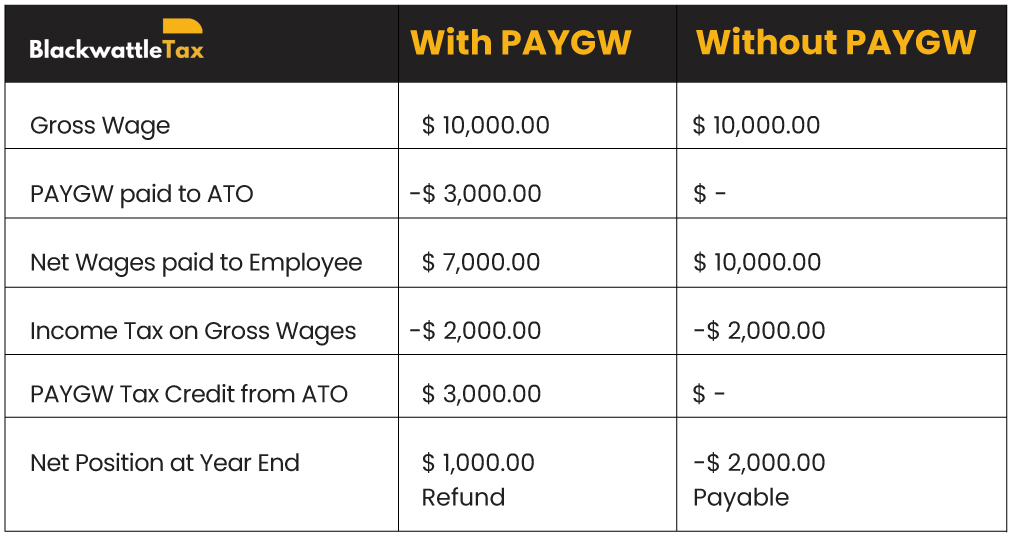
When completing your BAS Returns, you will need to report the Gross Wages for the assess period at label W1, and the PAYGW component at W2.
The PAYGW tax credits you have set aside can then be paid to the ATO for holding until your employee prepares their Tax Return.
It’s worth noting that the W1 and W2 labels should include all the wages for all of your employees.
You should ensure that you are up to date with reporting your wages via Single Touch Payroll (STP), and your STP ready software should be able to produce a report outlining your total W1 and W2 amounts for a BAS period.
BAS T7 – PAYG Instalments
Similar to how PAYGW functions for your employees, your business can also prepay some of its annual tax bill throughout the year. This is done by paying PAYG Instalments, or PAYGI.
The ATO will assess your PAYGI amounts based on the income tax your business paid the previous year, and it should be prefilled for you when you go to prepare your BAS Return.
As previously mentioned, paying these period instalments will help your business maintain healthy cashflow and avoid a large tax liability at year end.
Step 3 – Lodging your BAS Return
Now that you’ve collated all the information you require for each of the labels, you will need to file the data with the ATO and arrange payment or refund of the net amount.
You can do this by:
- Completing the return on the ATO’s online business portal
- Using the ATO app
- Filing the return via your Standard Business Reporting (SBR)-enabled software
- Engaging with a registered tax agent to lodge the return on your behalf
Bottom Line
Lodging your business’ BAS returns does not have to be a mammoth undertaking. It’s critical that as a small business owner, you stay on top of your file management to ensure that all of your information is readily available for reference. You should stay across the BAS and tax lodgement due dates.
Although you are now equipped with the skills to complete your return, it is always worth considering the time saving and peace of mind brought about by getting in contact with a small business accountant or BAS agent to prepare the returns on your behalf. This will make sure you lodge on time, that the information is correct, and you’re maximising your tax outcomes.
Ready to streamline your BAS Statement with Blackwattle Tax?
Searching for a small business accountant to assist with your BAS statement preparation and completion?
At Blackwattle Tax, we’re your trusted outsourced accounting team, dedicated to simplifying small business taxes and finances. We keep your accounts up to date for informed business decisions, handling tax details on time for accurate information and improvement options.
Our experienced Chartered Accountants are ready to support your business, delivering proven results across various industries for enhanced financial and tax outcomes.
Book a FREE 30-minute consultation today to discover how we can assist with your tax planning and investment decisions.
For business advice, investment tips, and tax planning strategies, sign up for our monthly newsletter.
Disclaimer: We endeavour to make sure the information provided in this guidance is up to date and accurate. Please note, that the information is only intended to be a guide, with a general overview of information. This guidance is not a comprehensive document and should not be interpreted as legal advice or tax advice. The information is general in nature. You should seek the assistance of a professional opinion for any legal and tax issues related to your personal circumstances.

